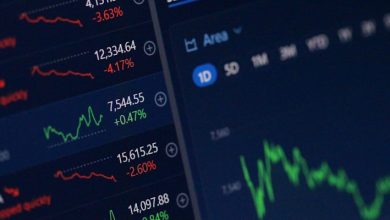How to Leverage Crypto Derivatives for Advanced Strategies

- Understanding the basics of crypto derivatives
- Exploring the different types of crypto derivatives available
- Implementing advanced trading strategies with crypto derivatives
- Leveraging leverage: how to use margin trading with crypto derivatives
- Risk management techniques for trading crypto derivatives
- Case studies: successful strategies using crypto derivatives
Understanding the basics of crypto derivatives
Crypto derivatives are financial contracts that derive their value from an underlying cryptocurrency asset. These derivatives allow traders to speculate on the price movements of cryptocurrencies without actually owning the assets themselves. Understanding the basics of crypto derivatives is essential for anyone looking to leverage them for advanced trading strategies.
One of the most common types of crypto derivatives is a futures contract. A futures contract is an agreement to buy or sell a specific amount of a cryptocurrency at a predetermined price on a specified date in the future. By trading futures contracts, traders can profit from both rising and falling prices of cryptocurrencies.
Another popular type of crypto derivative is an options contract. Options give traders the right, but not the obligation, to buy or sell a cryptocurrency at a predetermined price within a specified time frame. This flexibility allows traders to hedge their positions and manage risk effectively.
Understanding how to use leverage is crucial when trading crypto derivatives. Leverage allows traders to control a larger position with a smaller amount of capital. While leverage can amplify profits, it can also magnify losses, so it is important to use it wisely and manage risk effectively.
Exploring the different types of crypto derivatives available
When it comes to leveraging crypto derivatives for advanced strategies, it is crucial to explore the different types of derivatives available in the market. Crypto derivatives offer investors a way to speculate on the price movements of cryptocurrencies without actually owning the underlying assets. This can be done through various types of contracts that derive their value from the price of cryptocurrencies.
One popular type of crypto derivative is a futures contract. Futures contracts allow investors to buy or sell a specific amount of a cryptocurrency at a predetermined price at a specified date in the future. This type of derivative is often used by traders to hedge their positions or speculate on the future price of a cryptocurrency.
Another type of crypto derivative is an options contract. Options give investors the right, but not the obligation, to buy or sell a cryptocurrency at a predetermined price within a specified timeframe. This type of derivative provides investors with more flexibility compared to futures contracts, as they can choose whether or not to exercise their option based on market conditions.
Additionally, perpetual swaps are another type of crypto derivative that has gained popularity in recent years. Perpetual swaps are similar to futures contracts but do not have an expiry date. This allows traders to hold their positions indefinitely, making them ideal for those looking to engage in long-term trading strategies.
Overall, exploring the different types of crypto derivatives available can help investors diversify their portfolios and take advantage of various trading opportunities in the cryptocurrency market. Whether it’s futures contracts, options, or perpetual swaps, each type of derivative offers unique benefits and risks that investors should carefully consider before incorporating them into their trading strategies.
Implementing advanced trading strategies with crypto derivatives
When it comes to leveraging crypto derivatives for advanced strategies, traders can implement a variety of techniques to maximize their profits and minimize risks. One of the key strategies is using leverage to amplify gains, although this comes with the potential for increased losses as well. Traders can also utilize options contracts to hedge against market volatility and protect their positions.
Another advanced strategy involves using futures contracts to speculate on the future price of cryptocurrencies. By taking a long or short position on a futures contract, traders can profit from both rising and falling markets. Additionally, traders can engage in arbitrage opportunities by simultaneously buying and selling related assets on different exchanges to take advantage of price discrepancies.
Furthermore, traders can employ sophisticated technical analysis techniques to identify trends and patterns in the market. This can help them make more informed trading decisions and potentially increase their profits. Additionally, algorithmic trading strategies can be implemented to automate trades based on pre-defined criteria, allowing traders to take advantage of market opportunities 24/7.
Leveraging leverage: how to use margin trading with crypto derivatives
When it comes to leveraging your investments in the crypto market, margin trading with crypto derivatives can be a powerful tool. By using margin trading, investors can amplify their positions and potentially increase their profits. However, it is important to approach margin trading with caution, as it can also magnify losses.
One key benefit of margin trading with crypto derivatives is the ability to enter into larger positions than would be possible with just your own funds. This can allow for greater potential returns on successful trades. Additionally, margin trading can provide the opportunity to diversify your portfolio and take advantage of market movements that you might have otherwise missed.
It is important to remember that margin trading with crypto derivatives carries a higher level of risk than traditional trading. Prices in the crypto market can be highly volatile, and leverage can amplify these fluctuations. It is crucial to carefully manage your risk and set stop-loss orders to prevent significant losses.
Before engaging in margin trading with crypto derivatives, it is essential to thoroughly research the platform you plan to use and understand the terms and conditions of the margin trading agreement. Additionally, consider starting with a smaller leverage ratio until you become more comfortable with the process.
Risk management techniques for trading crypto derivatives
One crucial aspect of trading crypto derivatives is managing the associated risks effectively. By implementing various risk management techniques, traders can protect their investments and minimize potential losses. Here are some strategies to consider:
- **Diversification**: Spreading your investments across different crypto assets can help reduce the impact of volatility in any single asset. This can help mitigate risk exposure and provide a more balanced portfolio.
- **Stop-loss orders**: Setting stop-loss orders can automatically sell a position once it reaches a certain price level. This can help limit losses and prevent emotional decision-making during volatile market conditions.
- **Hedging**: Utilizing hedging strategies, such as options or futures contracts, can help offset potential losses in one position with gains in another. This can provide a level of protection against adverse market movements.
- **Risk assessment**: Conducting thorough risk assessments before entering a trade can help identify potential pitfalls and develop a plan to manage them effectively. Understanding the risks involved is essential for making informed decisions.
- **Position sizing**: Properly sizing your positions based on your risk tolerance and overall portfolio size is crucial for managing risk. Avoid overleveraging or putting too much capital into a single trade.
By incorporating these risk management techniques into your trading strategy, you can navigate the complex world of crypto derivatives with more confidence and security. Remember that risk management is a key component of successful trading and can help you achieve your financial goals in the long run.
Case studies: successful strategies using crypto derivatives
Several case studies have demonstrated successful strategies utilizing crypto derivatives to maximize returns and manage risk effectively. These strategies have been employed by experienced traders and investors who understand the complexities of the crypto market and how derivatives can be used to their advantage.
- One successful strategy involves using options contracts to hedge against price fluctuations in the crypto market. By purchasing put options, investors can protect their downside risk while still benefiting from potential upside gains. This strategy has proven effective in volatile market conditions.
- Another strategy that has shown success is using futures contracts to take advantage of price movements in the crypto market. By going long on a futures contract, traders can profit from an anticipated price increase, while going short allows them to profit from a price decline. This strategy requires a keen understanding of market trends and timing.
- Some investors have also utilized perpetual swaps to gain exposure to the crypto market without actually owning the underlying asset. By trading perpetual swaps, investors can benefit from leverage and increase their potential returns. However, this strategy also comes with increased risk due to the use of leverage.
Overall, these case studies highlight the versatility and potential profitability of using crypto derivatives in advanced trading strategies. By carefully considering risk management and market conditions, investors can effectively leverage derivatives to enhance their crypto investment portfolios.



